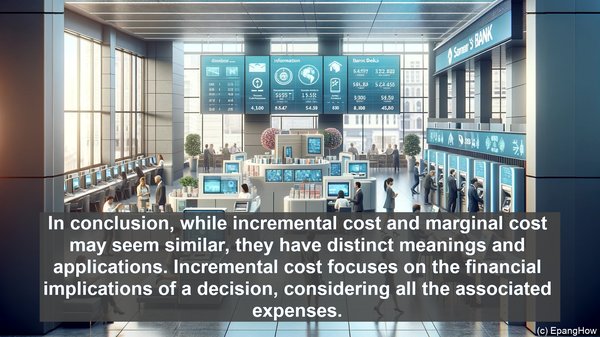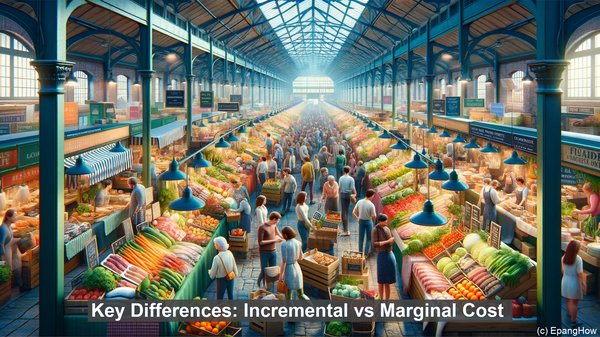Introduction: The World of Costs
Hello everyone, welcome to today’s article. When it comes to running a business or making any economic decision, understanding costs is crucial. Among the various cost-related terms, two often cause confusion – incremental cost and marginal cost. While they may seem similar, they have distinct meanings and applications. So, let’s dive in and explore the difference between incremental cost and marginal cost.

Defining Incremental Cost
Incremental cost refers to the change in total cost that occurs due to a specific decision or action. It focuses on the additional expenses incurred by choosing a particular option. For example, let’s say a company is considering expanding its production capacity. The incremental cost would include the expenses related to acquiring new machinery, hiring additional staff, and any other costs directly associated with the expansion. Incremental cost is often used in cost-benefit analysis, where it helps assess the financial viability of a decision.

Exploring Marginal Cost
On the other hand, marginal cost represents the change in total cost resulting from producing one additional unit of a product or service. It is the cost of increasing output by a single unit. To calculate marginal cost, one needs to consider both the variable costs, which change with production levels, and the fixed costs, which remain constant. By understanding the marginal cost, businesses can determine the optimal level of production, ensuring that the additional revenue generated from selling the extra unit exceeds the cost of producing it.
Key Differences: Incremental vs Marginal Cost
While both incremental cost and marginal cost deal with changes in costs, there are a few key differences between them. Firstly, incremental cost is more focused on decision-making, analyzing the financial implications of a specific choice. Marginal cost, on the other hand, is concerned with production optimization, aiming to strike the right balance between costs and output. Secondly, incremental cost considers all the expenses associated with a decision, not just the direct production costs. It takes into account factors like marketing expenses, maintenance costs, and even potential revenue changes. Marginal cost, however, primarily focuses on the direct costs of production. Lastly, incremental cost is often used in long-term planning, assessing the overall impact of a decision. Marginal cost, on the other hand, is more relevant for short-term decisions, where immediate cost and revenue considerations are crucial.
Real-World Applications
Understanding the difference between incremental cost and marginal cost is essential for various real-world scenarios. For example, in pricing decisions, businesses need to consider both the incremental cost of producing an additional unit and the marginal cost of doing so. By setting the price above the marginal cost, they can ensure profitability. In capacity planning, incremental cost helps determine the financial feasibility of expanding operations. By comparing the incremental cost with the potential revenue increase, businesses can make informed decisions. Similarly, in make-or-buy decisions, where companies need to choose between producing a component in-house or outsourcing it, incremental cost analysis plays a crucial role. By comparing the incremental cost of each option, they can identify the most cost-effective solution.
